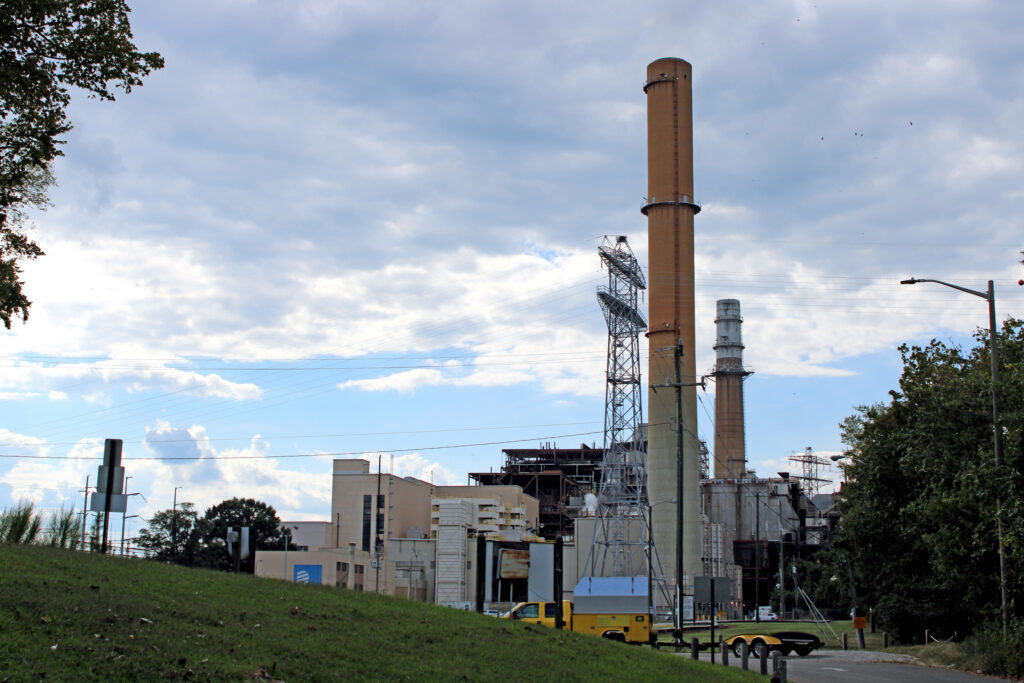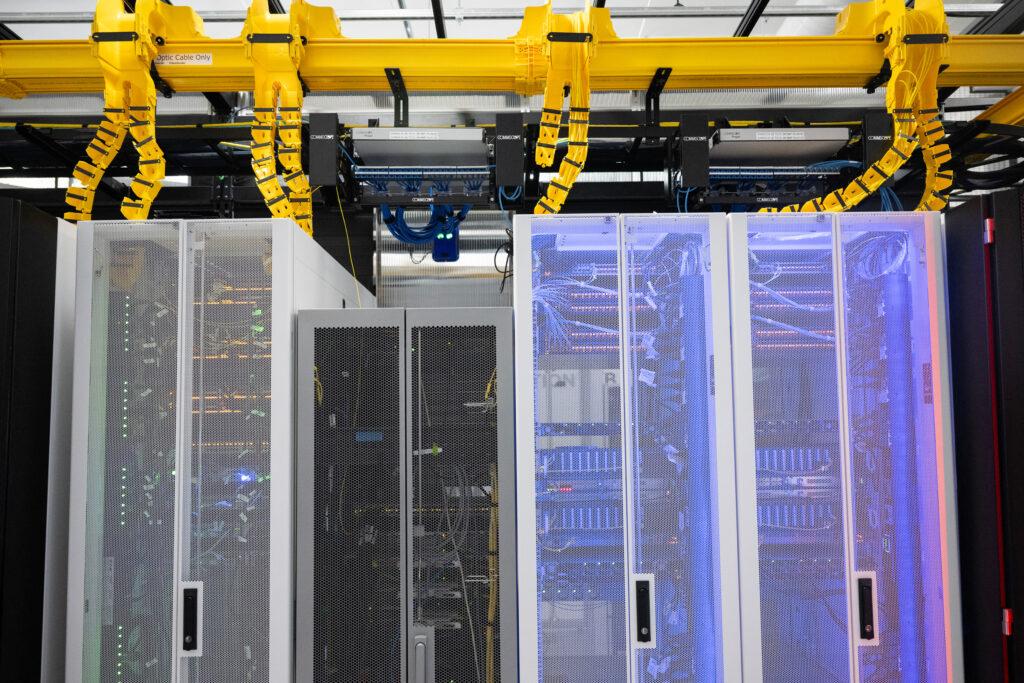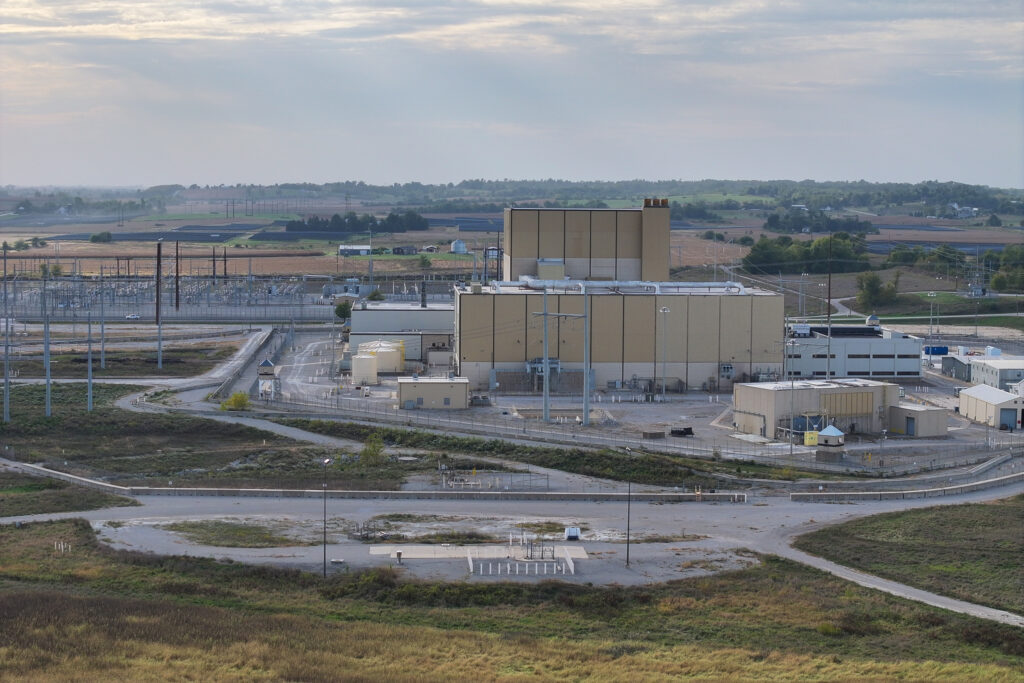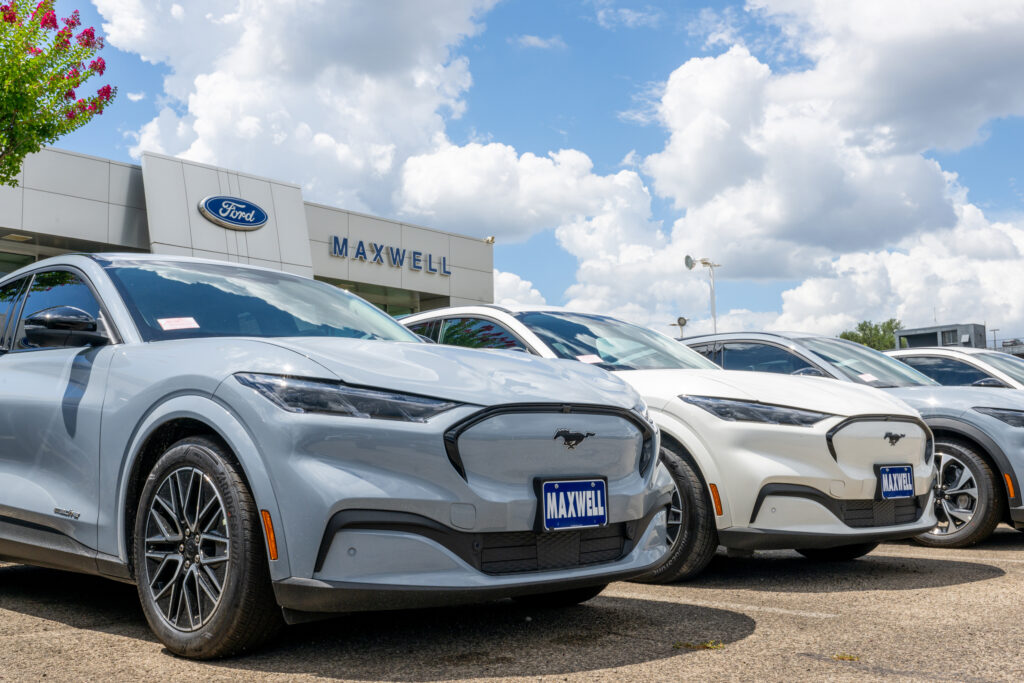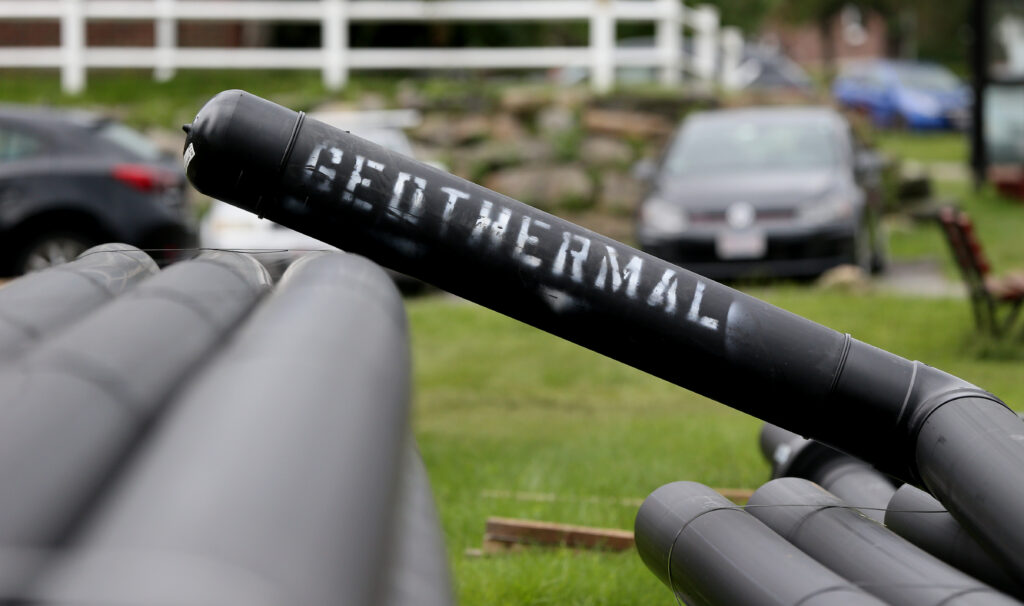This spring was meant to bring a flowering of climate action by President Joe Biden’s administration. But the heat of the 2024 political season has scorched some of its most ambitious plans.
Facing pushback from political allies and vulnerable Senate Democrats, as well as the growing risk of reversal by a future Republican Congress, the Biden administration has abandoned some of the most controversial elements of its climate agenda. Instead, over the coming weeks, federal agencies are set to finalize some long-awaited climate regulations in much weakened form:
- U.S. companies will be forced for the first time to disclose climate-related risks to investors, under rules that Wall Street’s top regulator is expected to approve Wednesday. But the Securities and Exchange Commission (SEC) is expected to drop its original plan to make businesses include climate-related perils up and down their supply chains.
- The U.S. power industry will be required to rein in emissions from coal plants, as the Environmental Protection Agency (EPA) revives an effort begun nearly a decade ago. But the EPA said it will delay action on the more than 2,000 existing natural gas plants that are now responsible for 43 percent of the sector’s greenhouse gas pollution.
- Automakers will face new tailpipe emissions standards designed to drive an industry transition to electric vehicles. But reports indicate that the EPA will slow the implementation of the new rules, delaying a sharp ramp-up in EVs until after 2030.
We’re hiring!
Please take a look at the new openings in our newsroom.
See jobs
The Biden administration maintains that its goals are unchanged; it is determined to put policy in place to cut economy-wide carbon emissions 50 percent by 2030 and 100 percent by 2050. EPA Administrator Michael Regan said the delay in regulating natural gas power plants, for example, will give his agency time to develop a “stronger, more durable approach,” resulting in greater emissions reductions in the long run.
In the meantime, getting strong coal power plant rules finalized now will protect them from summary reversal by Republicans in 2025 should they gain control of Congress. Under the Congressional Review Act, any regulations finalized after May are at risk, especially if former President Donald Trump prevails in November’s general election.
But some climate action advocates are worried the Biden administration, by watering down some of its initiatives, will miss the opportunity to act before the planetary crisis worsens.
“I understand the political urgency, and they should be putting things in place in order to try to meet that deadline,” said Nathaniel Keohane, president of the Center for Climate and Energy Solutions, referring to the Congressional Review Act. “But the climate clock is running out even faster. And I would like to see more urgency, in terms of not just completing the rules by a deadline, but making them aggressive enough to be on track to meet our targets.”
Tax Break Carrots, Regulatory Sticks
By any measure, Biden already has taken more significant action on climate change than any other president by winning Congressional passage of the Inflation Reduction Act in 2022. That law committed the federal government to providing an unprecedented $370 billion for reducing carbon emissions through a combination of direct appropriations and tax credits.
But leading environmental analysts, including the Rhodium Group, Energy Innovation and Princeton University’s REPEAT Project, have concluded that the tax breaks, grants and other incentives in the Inflation Reduction Act alone will not get the United States to its carbon reduction targets under the Paris Agreement. In the view of the Biden administration and many climate action advocates, the economy will need more than carrots, but also sticks—in this case, regulation—to meet those goals.
“The best approach is to weave together a bunch of incentives with a regulatory pathway that gives the industry a sense of knowing where they have to go,” said Bob Perciasepe, a former deputy EPA administrator who worked on climate initiatives early in President Barack Obama’s administration.
“It’s a climate Tower of Babel.”
The Biden administration has always envisioned that regulation would work hand-in-hand with incentives to send a signal to markets that there will be a growing demand for cleaner energy. “For any of this to work, we need to have this flow of capital to newer approaches for making electricity, or driving cars, or whatever,” Perciasepe said.
Climate action advocates have long argued that corporate disclosure regulations are among the most important actions that government can take to encourage the flow of capital to businesses that are solving the crisis rather than worsening it. The vast majority of large publicly traded companies release climate information, but because each uses its own measure of what’s important—zero carbon products, water use, reliance on plastics—it is of limited use to investors who are trying to compare how they are acting on climate.
“It’s a climate Tower of Babel,” said Steven Rothstein, managing director of the Ceres Accelerator for Sustainable Capital Markets. Investors with Ceres, a Boston-based nonprofit advocacy group for sustainable investing, first met with the SEC to call for standardized rules on climate disclosure in 2003.
It was not until March 2022 that the SEC proposed such rules, and they have been a top priority of Chairman Gary Gensler, a Biden appointee. The regulations would require that companies disclose not only physical climate risks, like sea level rise and drought, but the business risks they face due to new climate-driven laws or regulations. Companies also would be required to disclose greenhouse gas emissions.
Gensler has faced significant pushback on the plan from the two Republican members of the five-person bipartisan commission, with Trump appointee Hester Peirce declaring, “We are not the Securities and Environment Commission.”
The Commission is expected to vote on rules that are substantially pared down from the original proposal, which would have required that companies disclose emissions and climate risks not just from production, but also from their suppliers of raw materials as well as use of their products. For oil and gas companies, these so-called “Scope 3” emissions include the burning of fuel in cars, trucks and power plants, which accounts for as much as 90 percent of the carbon pollution they produce, according to the Union of Concerned Scientists.

Sen. Sheldon Whitehouse (D-R.I.), a leading champion of climate action in the Senate, expressed dismay at the expected softening of the SEC proposal at an American Council on Renewable Energy policy forum last week. He blamed the fossil fuel industry for stoking opposition, by promoting the idea that investment based on environmental, social and governance principles—known as “ESG”—is a far-left idea, a kind of “woke capitalism.”
“I would fault the Biden administration for not having called this out in an effective way, despite owning the bulliest of pulpits,” Whitehouse said. “And I think that has caused executive agencies and quasi-independent agencies like the SEC to pull their ambitions in a little bit.”
But the 16,000 comments that the SEC received on its proposal also included worries raised by allies of the Biden administration, including Sen. Jon Tester (D-Mont.), who faces a tough re-election battle this year. In a January letter with Sen. Krysten Sinema of Arizona, Tester warned that small farmers and ranchers could be harmed by Scope 3 reporting requirements.
“If a family farm in eastern Montana wants to sell barley to a large, publicly traded brewing company, the SEC has no business writing a rule that could require them to closely track the emissions related to their operations,” Tester and Sinema wrote. Sinema, a Democrat-turned-independent, bowed out of her tough battle for re-election on Tuesday.
The vast majority of institutional investors who commented on the SEC’s proposal supported inclusion of Scope 3 emissions as part of climate risk disclosure, according to a Ceres analysis. But Rothstein said even a disclosure rule that only focuses on direct emissions will be important in engaging capital markets worth tens of trillions of dollars on climate change, even as the government is now devoting billions of dollars of investment in the Inflation Reduction Act.
“The government is a critical actor, but to reach the market securities we need, and to make the transition, there has to be both public and private sector action,” Rothstein said. Up to now, money managers haven’t been able to effectively invest with an eye to climate risks, he said, because “fundamentally, you can’t manage what you can’t measure.”
Industry, Labor, and Communities Seek Delay
On EPA climate regulations, the Biden administration also has faced opposition from allies.
To address the electric power sector, source of 25 percent of the nation’s carbon pollution, the EPA developed a complex proposal with differing requirements based on plant size and fuel. The rules are likely to accelerate the closure of coal plants that already has been happening across the United States over the past decade, due to market forces and cheaper natural gas and renewable energy.
But the EPA envisioned a future for both new and existing natural gas plants in a carbon-constrained world, through the use of carbon capture and storage (CCS) technology or co-firing with hydrogen. Vulnerable Senate Democrats, this time including Sen. Sherrod Brown of Ohio, raised concerns that energy costs would rise due to reliance on technologies that were not yet mature.
Meanwhile, communities of color, which historically have borne the brunt of fossil fuel pollution, argued that reliance on CCS would perpetuate that injustice and delay the transition to cleaner technology.
On. Feb. 29, Regan announced that he would delay rules on existing natural gas plants, which would have relied on carbon capture technology to control emissions from the largest plants. Instead, he said EPA would begin developing “a new, comprehensive approach” for such plants, covering not only carbon but also air toxics and pollutants such as ozone and fine particles. Such pollutants already are regulated, but environmental justice advocates say EPA standards are not stringent enough to protect health in places with high cumulative exposure.
“Any rulemaking to address the existing gas sector can and must achieve significant reductions in greenhouse gases while also improving local air quality and the public health of overburdened communities,” said a coalition led by the Deep South Center for Environmental Justice, which praised Regan’s decision to defer action on gas power plants.
But the American Petroleum Institute also welcomed the delay. It intends to use the time to further advocate for expanding the use of natural gas, which it promotes as less carbon-polluting than coal, even though those benefits can be erased by leaks of the potent greenhouse gas methane. “Natural gas is the backbone of U.S. electricity generation,” said Dustin Meyer, API’s senior vice president for policy.
Some climate advocates worry Biden’s EPA is missing its chance to control what is rapidly becoming the largest source of carbon pollution in the power sector. “March Madness started early this year,” said Frank Sturges, attorney at Clean Air Task Force, a climate advocacy group supportive of CCS, in a statement. “Rather than taking the shot to eliminate emissions from existing gas plants, EPA has chosen to sit on the bench.”
On vehicle emissions, which have grown over the past decade to become the largest source of U.S. greenhouse gas emissions, the Biden administration has yet to publicly signal whether it will amend its proposal released last year that is meant to accelerate the sale of electric vehicles. The New York Times last month reported that the EPA is on track to give car manufacturers more time to achieve the required cuts in tailpipe greenhouse gas emissions.
Such a delay was sought not only by the automakers, but the United Auto Workers—a key constituency for Biden, especially in the critical swing state of Michigan. Although the AFL-CIO announced its backing of Biden last June, the earliest it had ever weighed in on a presidential race, the UAW delayed making any endorsement. Then, in September, Biden became the first president ever to join a picket line during the UAW’s six-week strike against Detroit automakers—a conflict in which the union fought for a strong labor role in the EV future. UAW President Shawn Fain finally endorsed Biden in January, the day after the New Hampshire primary, while still voicing concern over EV policy.


In comments to the EPA last year, the UAW said that it “fully supports the transition to a cleaner auto industry,” but was concerned that the burden was poised to fall heavily on workers in manufacturing of internal combustion engine vehicles and parts. With the availability of good-paying union jobs in the EV industry still uncertain, the union urged the EPA to set a tailpipe emissions standard that “increases stringency more gradually, and occurs over a greater period of time.”
The EPA’s vehicle rules were designed to be one of the largest sources of emissions cuts in the Biden climate agenda. With a ramp-up designed to increase EVs’ share of new vehicle sales from 7 percent to 67 percent by 2032, the EPA estimated a reduction of nearly 10 billion tons of carbon dioxide pollution through 2055—the equivalent of two years of greenhouse gas emissions from the entire U.S. economy.
Some climate activists are concerned that any lag in action on vehicle emissions could dramatically stall U.S. progress toward its Paris Agreement goals. “Pace really matters and slowing the rate of improvement of the biggest rule on one of the biggest sources of emissions would make meeting those climate targets virtually impossible,” Dave Cooke, senior vehicles analyst with the Union of Concerned Scientists, said Monday on the S&P Global commodity insights podcast.
An Election That Could Hammer Regulations
The Biden team faces a more immediate deadline, thanks to the legacy of Newt Gingrich and his stint as House Speaker. The Congressional Review Act, passed as part of Gingrich’s 1996 Contract With America legislative package, provides Congress with a relatively easy path for overturning any regulation finalized within the last 60 working days of the previous Congress. All that is required is a simple majority, as long as the president agrees with the decision.
In practice, the law is only salient when an opposing party gains control of both Congress and the White House after an election. And for its first 20 years, the Congressional Review Act was only used once—in 2001, when the Republican Congress that swept in with President George W. Bush voted to kill the workplace ergonomic rules that were finalized late in President Bill Clinton’s administration.
This story is funded by readers like you.
Our nonprofit newsroom provides award-winning climate coverage free of charge and advertising. We rely on donations from readers like you to keep going. Please donate now to support our work.
Donate Now
Then came Trump. He signed off on Congressional kills of 16 regulations finalized in Obama’s final year in office.
A sole Republican in Congress—the late Sen. John McCain—saved Obama’s methane rules from the Congressional Review Act hammer. (He did the same with Obamacare.) That would have been a devastating blow to climate action efforts, since the Congressional Review Act essentially prohibits any future administration from resurrecting any rule the CRA kills.
Trump eventually did rescind Obama’s methane rules, along with about 100 other environmental regulations. But within months of Biden’s election, the Democratic-controlled Congress rescinded Trump’s rescission of the methane rules; it was one of three Trump actions lawmakers killed using the CRA. Since then, Biden has sought to strengthen the methane rules and others he has revived from Obama’s original climate plan, including rules on power plants and passenger vehicle tailpipe emissions.
But the effort has taken most of Biden’s first term in office. The exact date of Biden’s Congressional Review Act deadline is not known; it depends on how many legislative session days are scheduled this year, which is largely in the hands of GOP House Speaker Mike Johnson of Louisiana. Officials are working to finish big rulemakings by May.
“You want to avoid making it easy for the next guy to roll back your stuff,” said Perciasepe, the former EPA deputy. “The things that are most important—not just on climate—they have to figure out which ones they’re going to stack up right now” and get to the White House for approval. “They’re in crunch time,” he said.
By law, agencies are required to respond to all issues raised in public comments when they finalize regulations. Doing so inadequately increases the risk that the rules will be overturned by the courts; and for the EPA, such challenges have become almost inevitable.
That’s why many observers believe the agencies are deferring the most difficult issues that are slowing progress on their climate regulations, hoping to preserve at least some of the desired climate benefit. But that more cautious approach has its own risks. For example, Regan’s pledge of future stronger action on natural gas plants has an unspoken contingency. It won’t happen without a second Biden term.






